Old Negative & Transparency Imaging
Discussion
I once had a "slide duplicator" that screwed onto the filter ring using an adapter, that was reasonably good but not great. It was a Jessops-branded thing that I picked up very cheaply. The one I have now (but not tried yet, another 50p car boot sale thing) seems to have an M42 screw mount on it, and some rudimentary zoom capability. I am sure there are more modern ways - these were both intended as ways to duplicate slides, as they pre-date digital by some time.
droopsnoot said:
I once had a "slide duplicator" that screwed onto the filter ring using an adapter, that was reasonably good but not great. It was a Jessops-branded thing that I picked up very cheaply. The one I have now (but not tried yet, another 50p car boot sale thing) seems to have an M42 screw mount on it, and some rudimentary zoom capability. I am sure there are more modern ways - these were both intended as ways to duplicate slides, as they pre-date digital by some time.
I think it's the right lens that's the key. I might just get them done by some specialist company. I'd like to process them from scratch from RAW files.This is one of those subjects that pops up faily regularly so see if you can wade through the search results to find some of the old threads. There are two camps: those who think a duplicator/copier attachment on an SLR is the way to go because it's quick & those who say if you're going to do it use a dedicated slide/negative scanner.
Which ever you end up with be aware it's a very time consuming process if you want good results with most of the time spent in post processing rather than scanning. The first step is to triage the pictures - not every shot is a masterpiece worth keeping. Personally I found that the biggest time saver was the IR dust removal feature on a proper slide scanner. It make a big difference.
Just a few previous threads:
https://www.pistonheads.com/gassing/topic.asp?h=0&...
https://www.pistonheads.com/gassing/topic.asp?h=0&...
https://www.pistonheads.com/gassing/topic.asp?h=0&...
Which ever you end up with be aware it's a very time consuming process if you want good results with most of the time spent in post processing rather than scanning. The first step is to triage the pictures - not every shot is a masterpiece worth keeping. Personally I found that the biggest time saver was the IR dust removal feature on a proper slide scanner. It make a big difference.
Just a few previous threads:
https://www.pistonheads.com/gassing/topic.asp?h=0&...
https://www.pistonheads.com/gassing/topic.asp?h=0&...
https://www.pistonheads.com/gassing/topic.asp?h=0&...
Mr Pointy said:
This is one of those subjects that pops up faily regularly so see if you can wade through the search results to find some of the old threads. There are two camps: those who think a duplicator/copier attachment on an SLR is the way to go because it's quick & those who say if you're going to do it use a dedicated slide/negative scanner.
Which ever you end up with be aware it's a very time consuming process if you want good results with most of the time spent in post processing rather than scanning. The first step is to triage the pictures - not every shot is a masterpiece worth keeping. Personally I found that the biggest time saver was the IR dust removal feature on a proper slide scanner. It make a big difference.
Just a few previous threads:
https://www.pistonheads.com/gassing/topic.asp?h=0&...
https://www.pistonheads.com/gassing/topic.asp?h=0&...
https://www.pistonheads.com/gassing/topic.asp?h=0&...
Thanks for that. Regarding the triage thing - I agree of course, but the "reduce camera shake" filter in PS can be extremely effective, to the extent that a few images I've scanned that were rubbish are now perfectly acceptable. Obviously out of focus is different to shake, but it's often worth a try.Which ever you end up with be aware it's a very time consuming process if you want good results with most of the time spent in post processing rather than scanning. The first step is to triage the pictures - not every shot is a masterpiece worth keeping. Personally I found that the biggest time saver was the IR dust removal feature on a proper slide scanner. It make a big difference.
Just a few previous threads:
https://www.pistonheads.com/gassing/topic.asp?h=0&...
https://www.pistonheads.com/gassing/topic.asp?h=0&...
https://www.pistonheads.com/gassing/topic.asp?h=0&...
I see there's a specific negative manipulation plug-in for Photoshop, with a 14 day free trial. I was hoping to use that.
When I take photos it's mostly on 35mm and medium format film, so I'm constantly scanning photos in to the computer. I then send them off to get printed etc.
The scanner I bought for about £180 is the Epson V550. It's a great scanner in my opinion, and does a great job of scanning the negatives I have. Mostly black and white film (as I can develop that myself), with the odd colour roll that I used to take to Jessops before they botched the last three films I gave them.
That said, I don't know what the Epson is like on a Windows machine, but the software it comes with on the Mac painful to use. So bloody slow to the point of just hanging there until you wiggle the mouse then wakes up. I don't own a DSLR as I don't/didn't think I have the budget for a good DSLR to take photos of the negatives.
Knowing what I know now, I'd have saved up for the DSLR and not bothered with the scanner, just because the EpsonScan software is so crap.
The scanner I bought for about £180 is the Epson V550. It's a great scanner in my opinion, and does a great job of scanning the negatives I have. Mostly black and white film (as I can develop that myself), with the odd colour roll that I used to take to Jessops before they botched the last three films I gave them.
That said, I don't know what the Epson is like on a Windows machine, but the software it comes with on the Mac painful to use. So bloody slow to the point of just hanging there until you wiggle the mouse then wakes up. I don't own a DSLR as I don't/didn't think I have the budget for a good DSLR to take photos of the negatives.
Knowing what I know now, I'd have saved up for the DSLR and not bothered with the scanner, just because the EpsonScan software is so crap.
sgtBerbatov said:
just because the EpsonScan software is so crap.
Have you tried VueScan software? It seems to be widely recommended and has been around for ages - I used to use it on a film scanner around 15 or more years ago. There's a free trial available to give it a test.
[quote=C&C]
There's a free trial available to give it a test.
No, never saw that. I'll give it a try this week. sgtBerbatov said:
just because the EpsonScan software is so crap.
Have you tried VueScan software? It seems to be widely recommended and has been around for ages - I used to use it on a film scanner around 15 or more years ago. There's a free trial available to give it a test.
Vuescan is brilliant.
I work for a scanning business and for slide and film I use an ancient Nikon coolscan 5000 with a slide hopper. I had a 4000 as well that died. For a cheapish batch scanner there hasn't been anything better. For small quantities or larger film we use a Epson V850 which is a nice cheap unit.
I work for a scanning business and for slide and film I use an ancient Nikon coolscan 5000 with a slide hopper. I had a 4000 as well that died. For a cheapish batch scanner there hasn't been anything better. For small quantities or larger film we use a Epson V850 which is a nice cheap unit.
dr_gn said:
What are the realative advantages of negative scanning vs negative imaging with a digital camera?
If I'm going to to do this at all, I want to end up with the best possible resolution to import into Photoshop.
Thanks.
If I'm going to to do this at all, I want to end up with the best possible resolution to import into Photoshop.
Thanks.
Simpo Two said:
dr_gn said:
What are the realative advantages of negative scanning vs negative imaging with a digital camera?
If I'm going to to do this at all, I want to end up with the best possible resolution to import into Photoshop.
Thanks.
If I'm going to to do this at all, I want to end up with the best possible resolution to import into Photoshop.
Thanks.
Next question is how? My camera sensors is probably up to it, but which lens is another thing altogether. Ideally I’d rather send them to somewhere to do it for me.
Simpo Two said:
e-photographing them is much faster, and if you consider the average DSLR is about 5000 pixels across that's a resolution of about 4000dpi - probably more than the grains of silver the original is made from.
Well maybe. Are scanner pixels the same as camera pixels?https://www.filmscanner.info/en/KnowHow.html
Mr Pointy said:
Simpo Two said:
e-photographing them is much faster, and if you consider the average DSLR is about 5000 pixels across that's a resolution of about 4000dpi - probably more than the grains of silver the original is made from.
Well maybe. Are scanner pixels the same as camera pixels?https://www.filmscanner.info/en/KnowHow.html
The film I use is different across the range, as well as the cameras I use. I love using Rollei Retro 400S. I scanned this photo taken on the Rollei Retro 400S with a Fed-3 rangefinder:
 A Dogs Life by Michael Burke, on Flickr
A Dogs Life by Michael Burke, on FlickrBut then I use Kentmere 400 which doesn't have that a finer grade than the Rollei, with a more basic BeLOMO Vilia camera:
 04-09-18--Kentmere_400-027 by Michael Burke, on Flickr
04-09-18--Kentmere_400-027 by Michael Burke, on FlickrThe point I'm getting at is that if the negative was taken on a poor camera, or the film wasn't handled right or it just generally looks crap, the higher resolution of the camera and/or flatbed will just magnify it. So I think unless you know the negatives are going to be pin sharp to start with, the resolution of the camera/flatbed doesn't really matter.
sgtBerbatov said:
Mr Pointy said:
Simpo Two said:
e-photographing them is much faster, and if you consider the average DSLR is about 5000 pixels across that's a resolution of about 4000dpi - probably more than the grains of silver the original is made from.
Well maybe. Are scanner pixels the same as camera pixels?https://www.filmscanner.info/en/KnowHow.html
The film I use is different across the range, as well as the cameras I use. I love using Rollei Retro 400S. I scanned this photo taken on the Rollei Retro 400S with a Fed-3 rangefinder:
 A Dogs Life by Michael Burke, on Flickr
A Dogs Life by Michael Burke, on FlickrBut then I use Kentmere 400 which doesn't have that a finer grade than the Rollei, with a more basic BeLOMO Vilia camera:
 04-09-18--Kentmere_400-027 by Michael Burke, on Flickr
04-09-18--Kentmere_400-027 by Michael Burke, on FlickrThe point I'm getting at is that if the negative was taken on a poor camera, or the film wasn't handled right or it just generally looks crap, the higher resolution of the camera and/or flatbed will just magnify it. So I think unless you know the negatives are going to be pin sharp to start with, the resolution of the camera/flatbed doesn't really matter.
The cameras used for the photos were either an Ilford Sprite (120 film IIRC), Olympus Trip 35, Canon AE1 or Minolta X-300/X-700.
Surely the negatives are going to be a much better starting point for enhancing than 35 year old prints? The prints won't have been perfect to start with, less so after all that time. Still, I've got what I consider to be acceptable results so far, but since it's available, I'm after another increment just to see what I can really do with them. Here are the original prints:
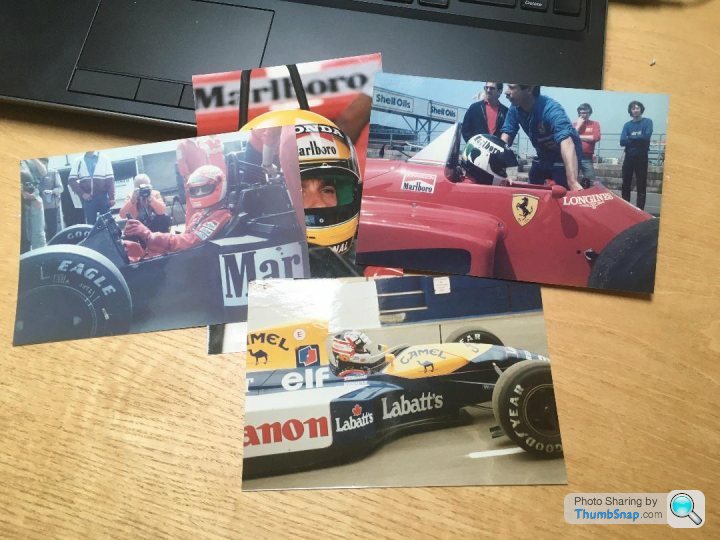
And some of the enhanced scans:
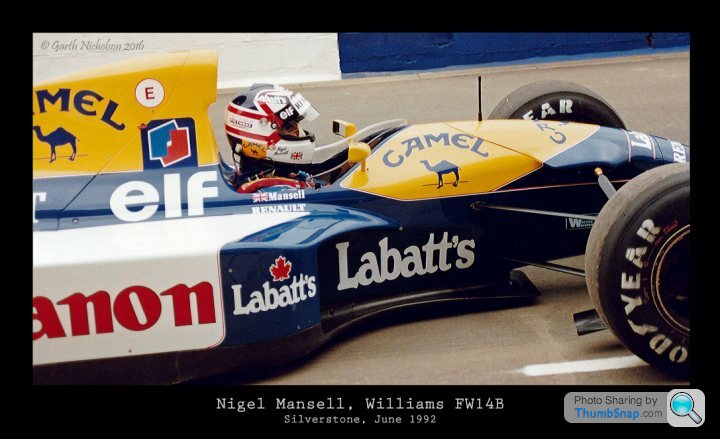
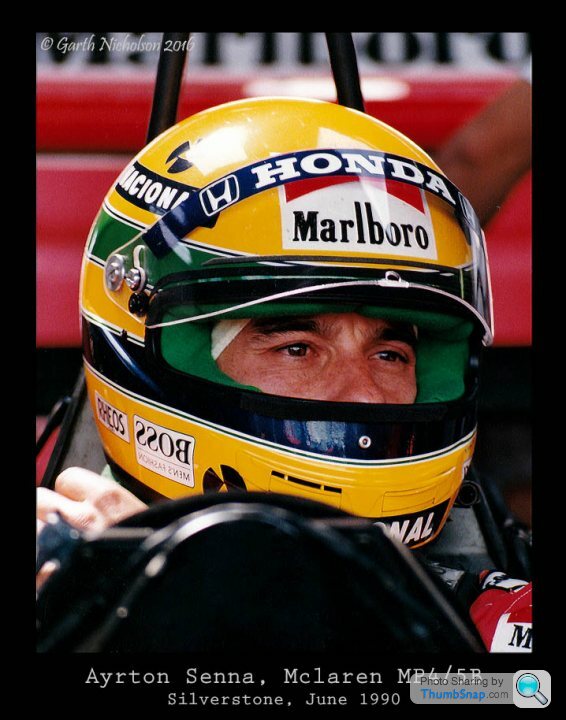
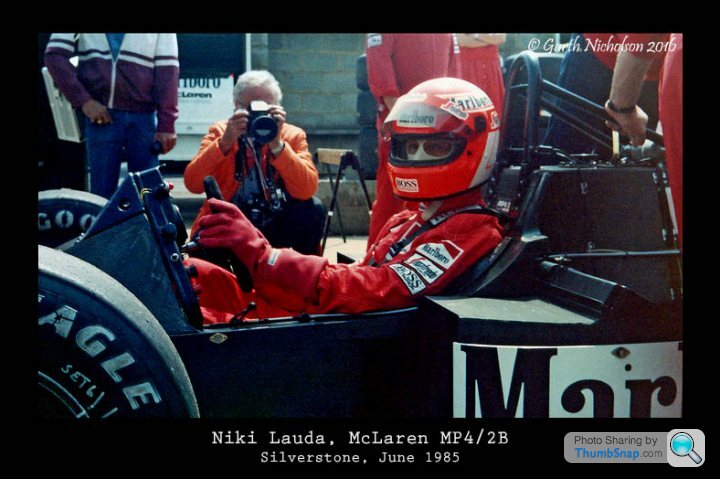
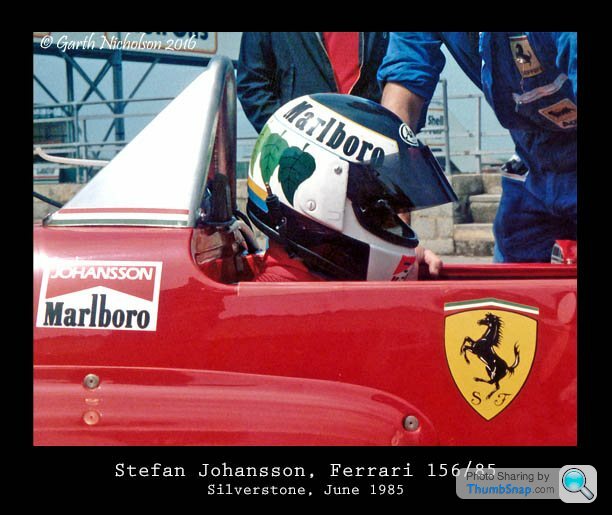
As I mentioned in another thread, I want to digitise the lot, enhance them the best I can, and make them into a one-off book for myself of my F1 memories, maybe along with images of old programs, tickets, pictures of my old cameras etc. There are around 200 images from 1979 - 2013.
If I'm going to do it, I want the best possible starting point in terms of digitising the negatives.
dr_gn said:
sgtBerbatov said:
Mr Pointy said:
Simpo Two said:
e-photographing them is much faster, and if you consider the average DSLR is about 5000 pixels across that's a resolution of about 4000dpi - probably more than the grains of silver the original is made from.
Well maybe. Are scanner pixels the same as camera pixels?https://www.filmscanner.info/en/KnowHow.html
The film I use is different across the range, as well as the cameras I use. I love using Rollei Retro 400S. I scanned this photo taken on the Rollei Retro 400S with a Fed-3 rangefinder:
 A Dogs Life by Michael Burke, on Flickr
A Dogs Life by Michael Burke, on FlickrBut then I use Kentmere 400 which doesn't have that a finer grade than the Rollei, with a more basic BeLOMO Vilia camera:
 04-09-18--Kentmere_400-027 by Michael Burke, on Flickr
04-09-18--Kentmere_400-027 by Michael Burke, on FlickrThe point I'm getting at is that if the negative was taken on a poor camera, or the film wasn't handled right or it just generally looks crap, the higher resolution of the camera and/or flatbed will just magnify it. So I think unless you know the negatives are going to be pin sharp to start with, the resolution of the camera/flatbed doesn't really matter.
The cameras used for the photos were either an Ilford Sprite (120 film IIRC), Olympus Trip 35, Canon AE1 or Minolta X-300/X-700.
Surely the negatives are going to be a much better starting point for enhancing than 35 year old prints? The prints won't have been perfect to start with, less so after all that time. Still, I've got what I consider to be acceptable results so far, but since it's available, I'm after another increment just to see what I can really do with them. Here are the original prints:

And some of the enhanced scans:




As I mentioned in another thread, I want to digitise the lot, enhance them the best I can, and make them into a one-off book for myself of my F1 memories, maybe along with images of old programs, tickets, pictures of my old cameras etc. There are around 200 images from 1979 - 2013.
If I'm going to do it, I want the best possible starting point in terms of digitising the negatives.
What I was trying to get across is that if the film or the camera (or both) aren't very good they may not have produced a nice negative, which will only be exacerbated by the high resolution of the scanner. If the scanner isn't as high pixel or resolution as the camera, does it matter if the negative itself isn't going to be pin sharp?
Your photos though (cool AF btw) would be improved by scanning from the negative, but you might not get them as pin sharp as you would if it was digital.
sgtBerbatov said:
Yeah the Fed-3 (as with all the Fed's) are just Russian copies of Lecia's.
What I was trying to get across is that if the film or the camera (or both) aren't very good they may not have produced a nice negative, which will only be exacerbated by the high resolution of the scanner. If the scanner isn't as high pixel or resolution as the camera, does it matter if the negative itself isn't going to be pin sharp?
Your photos though (cool AF btw) would be improved by scanning from the negative, but you might not get them as pin sharp as you would if it was digital.
Thanks. I realise they will never be the same technical standard as good digital images, but all I want to do is get the best possible results from what I've got. If I could go back in time to '70's, '80's & '90's Silverstone for a few days with my Canon M5 I assure you I would give all my savings and more! What I was trying to get across is that if the film or the camera (or both) aren't very good they may not have produced a nice negative, which will only be exacerbated by the high resolution of the scanner. If the scanner isn't as high pixel or resolution as the camera, does it matter if the negative itself isn't going to be pin sharp?
Your photos though (cool AF btw) would be improved by scanning from the negative, but you might not get them as pin sharp as you would if it was digital.
Why don't you send off a couple of samples to a scanning service & see if you are happy with what comes back? If you only have 200 shots to process it might not be cost effective to do it yourself. I've no experience of the results but a quick search gives:
38p per frame for a 30Mb TIFF file, digital download:
https://www.mr-scan.co.uk/index.html
200x 38p is £76 which won't get you anything if you buy your own.
38p per frame for a 30Mb TIFF file, digital download:
https://www.mr-scan.co.uk/index.html
200x 38p is £76 which won't get you anything if you buy your own.
Mr Pointy said:
Why don't you send off a couple of samples to a scanning service & see if you are happy with what comes back? If you only have 200 shots to process it might not be cost effective to do it yourself. I've no experience of the results but a quick search gives:
38p per frame for a 30Mb TIFF file, digital download:
https://www.mr-scan.co.uk/index.html
200x 38p is £76 which won't get you anything if you buy your own.
How would that tell me whether I would get better quality by imaging the negatives rather than scanning?38p per frame for a 30Mb TIFF file, digital download:
https://www.mr-scan.co.uk/index.html
200x 38p is £76 which won't get you anything if you buy your own.
I already know scanning negatives will probably be better than scanning prints.
dr_gn said:
Next question is how? My camera sensors is probably up to it, but which lens is another thing altogether. Ideally I’d rather send them to somewhere to do it for me.
You'd need a proper macro lens - a s/h one from eBay like a Tamron 90mm f2.8 would be fine if you don't want to spend too much money. Then a way to hold the slide at a fixed distance from the camera, and a plain white lit background, eg a lightbox. A nice little project if you're into DIY.Gassing Station | Photography & Video | Top of Page | What's New | My Stuff



